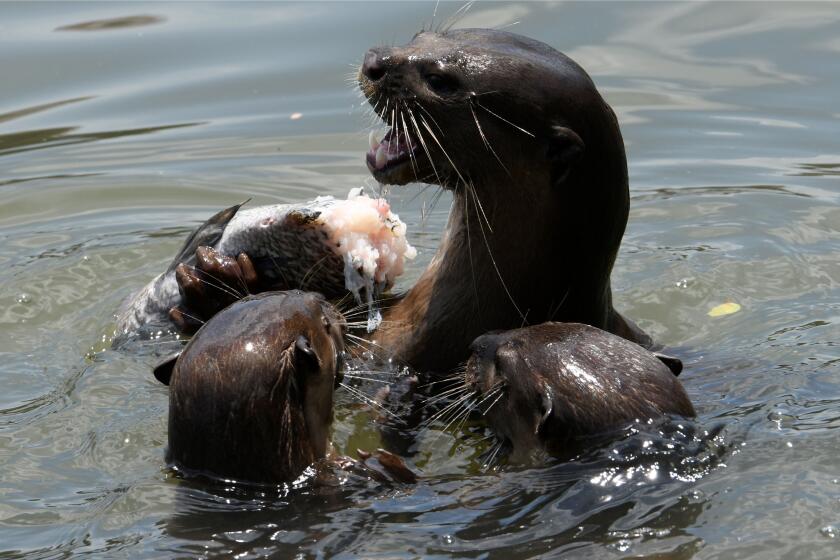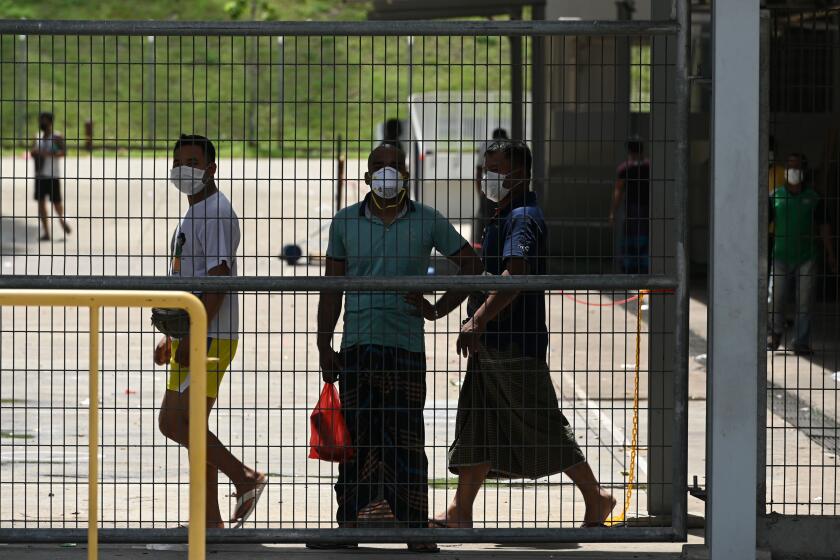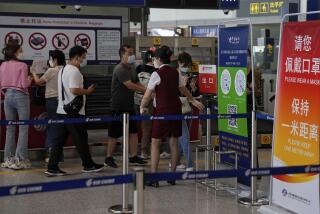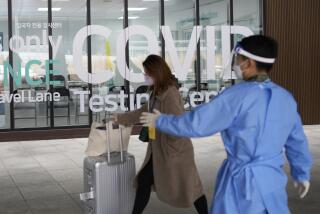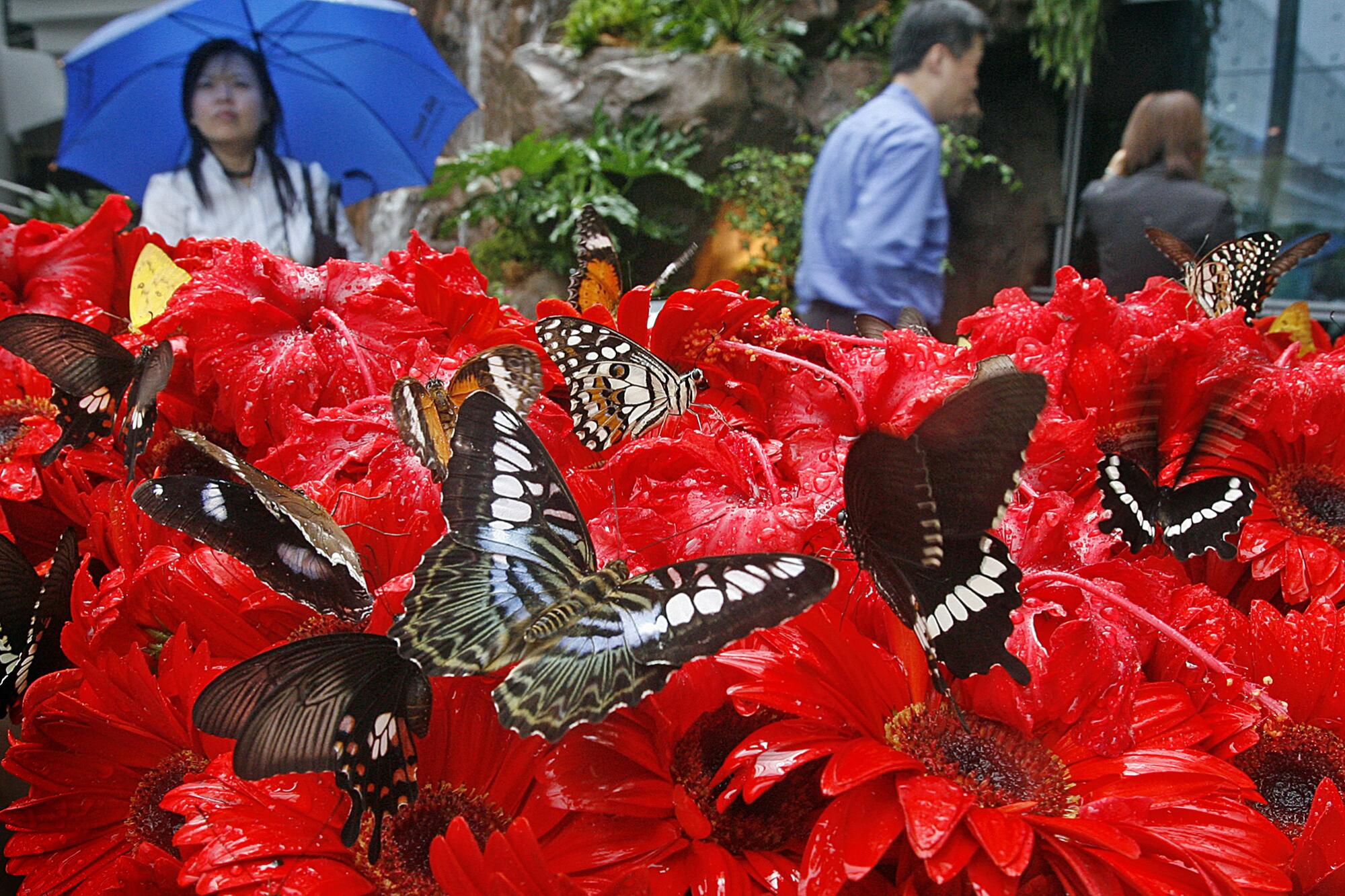
SINGAPORE — Flying is often an afterthought when visiting Singapore’s Changi Airport.
With its butterfly and orchid gardens, custom-made airport fragrance and glass-domed mall housing the world’s tallest indoor waterfall, the experience is considered the gold standard of international airports — a stark example of everything its austere American counterparts are not.
But the airport crowned the world’s best eight years running has been humbled by the COVID-19 pandemic.
Passenger traffic has plunged 99% since April. The groundbreaking of a fifth terminal on a plot of land roughly the size of LAX was shelved for two years. And airport executives, more accustomed to showing off whimsical amenities such as a five-story double-helix playground, are instead mustering enthusiasm for new safety measures such as a roving disinfectant-misting robot, contactless elevator buttons and ultraviolet-cleansing escalator handrails.
Reduced to a trickle of passengers, Changi and other airports in Asia built to awe visitors are now focused on serving as the first lines of defense against the spread of COVID-19. It is less these days about conjuring serenity amid grandeur than it is laying out an uneasy tableau of temperature screenings, quarantine notices and swab testing.
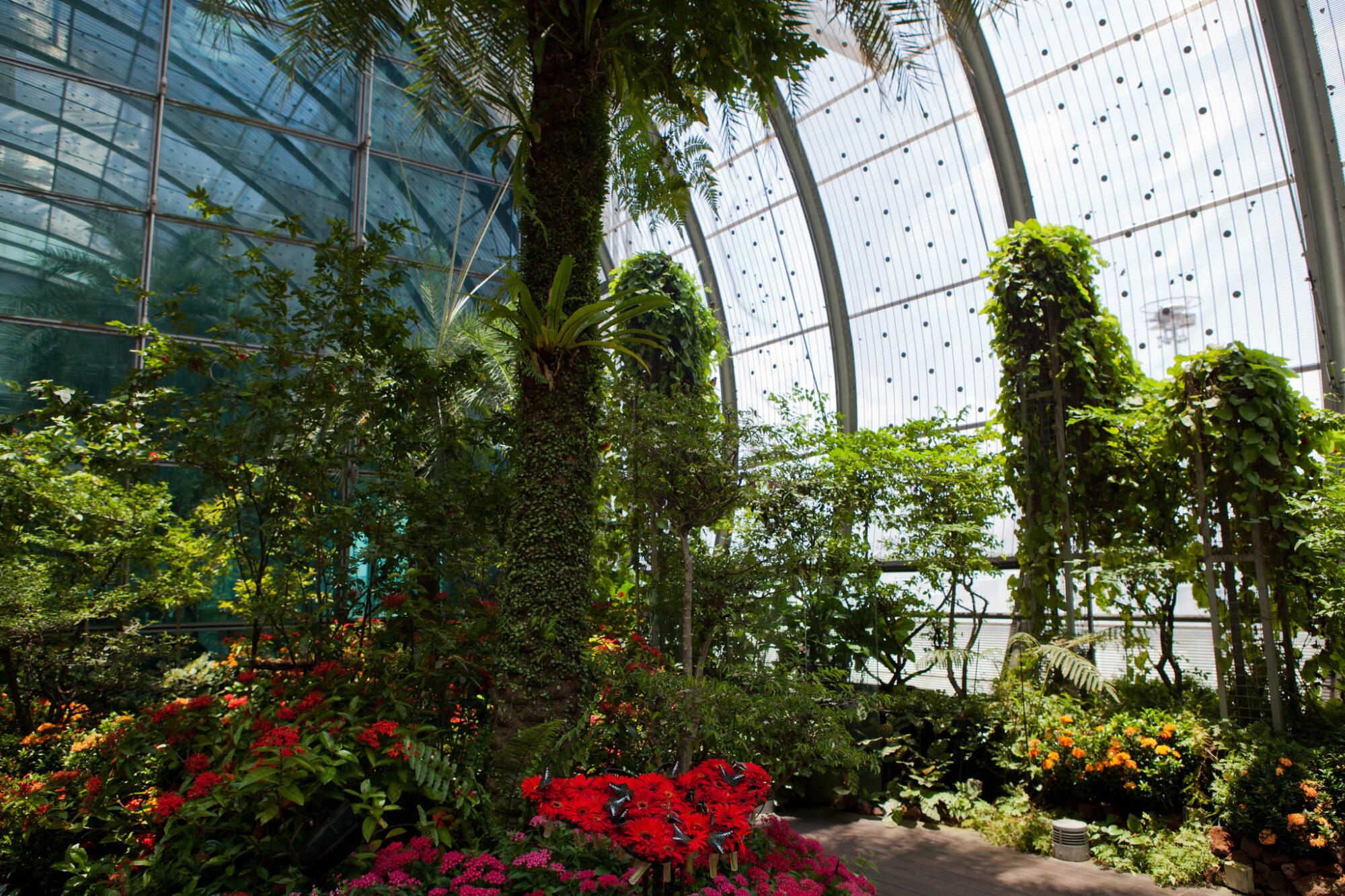
Changi and its peers, such as Hong Kong International Airport and South Korea’s Incheon International Airport, could operate as shells of themselves in the months, and perhaps, years to come, prompting a reshuffling of the competitive landscape and a reimagining of the role of airports in a much-changed world.
“Until the pandemic is overcome, the temptation is to think that frills are unnecessary, and that all one needs is a safe and secure way to get to one’s flight,” said Alan Tan, an aviation industry expert at the National University of Singapore. “But the airport that can find the sweet spot in between protecting passengers’ health and providing a comfortable experience will emerge as the hub of choice.”
The existential crisis marks a dramatic reversal for the aviation industry in Asia, which was in the middle of the biggest expansion in the world less than one year ago.
Steady economic growth, a flourishing middle class and a surge in tourism and budget airlines fueled demand for new passenger terminals and runways in China, Thailand, Malaysia, Indonesia, Vietnam, the Philippines and South Korea.
The Asia-Pacific region accounted for 45% of global passenger growth in the decade ending in 2018, according to Airports Council International Asia-Pacific, a trade group.
In that time, the number of so-called mega-airports in the region — facilities that handle more than 40 million passengers per year — grew to 23 from three.
Unrestricted by the land constraints and NIMBYism that complicate modernizing outdated airports in the U.S., Asia added behemoths such as the $11.3 billion Beijing Daxing International Airport, which is expected to be the world’s busiest in coming decades. Hong Kong committed $18 billion to expand its airport with a third runway and an additional terminal, while also making plans for an adjacent $20 billion shopping center (LAX’s long-awaited $14-billion makeover, which includes a satellite concourse and a train, is still on track despite the pandemic, a representative said).
“Unlike other regions, every country you looked at in Asia had substantial expansion in airports,” said Sajal Kishore, senior director for global infrastructure ratings at Fitch Ratings. “Now everything has changed. We probably won’t return to 2019 levels until 2021 or 2022.”
That may be optimistic. A vaccine may not be widely distributed until 2023, leaving the aviation industry in increasing financial peril. Airlines such as Malaysia’s low-cost carrier AirAsia, which had its shares suspended Wednesday, are teetering on the edge of insolvency.
Revenue for Asian Pacific airports are projected to decline 59% this year compared with 47% for facilities in North America, said Stefano Baronci, director general of Airports Council International Asia-Pacific.
Adding to the pressure is fear that corporate culture has been forever altered by the pandemic and business travel may never fully rebound, especially after widespread adoption of video conferencing has diminished the urgency for employees to get on a plane.
“If it’s a choice between using Zoom or Skype or having to get a swab test at an airport, it’s a no-brainer,” said Jason Buckalew, a Singapore-based sales executive for a telecom software company, who used to conduct four to six business trips a month that required flying out of Changi.
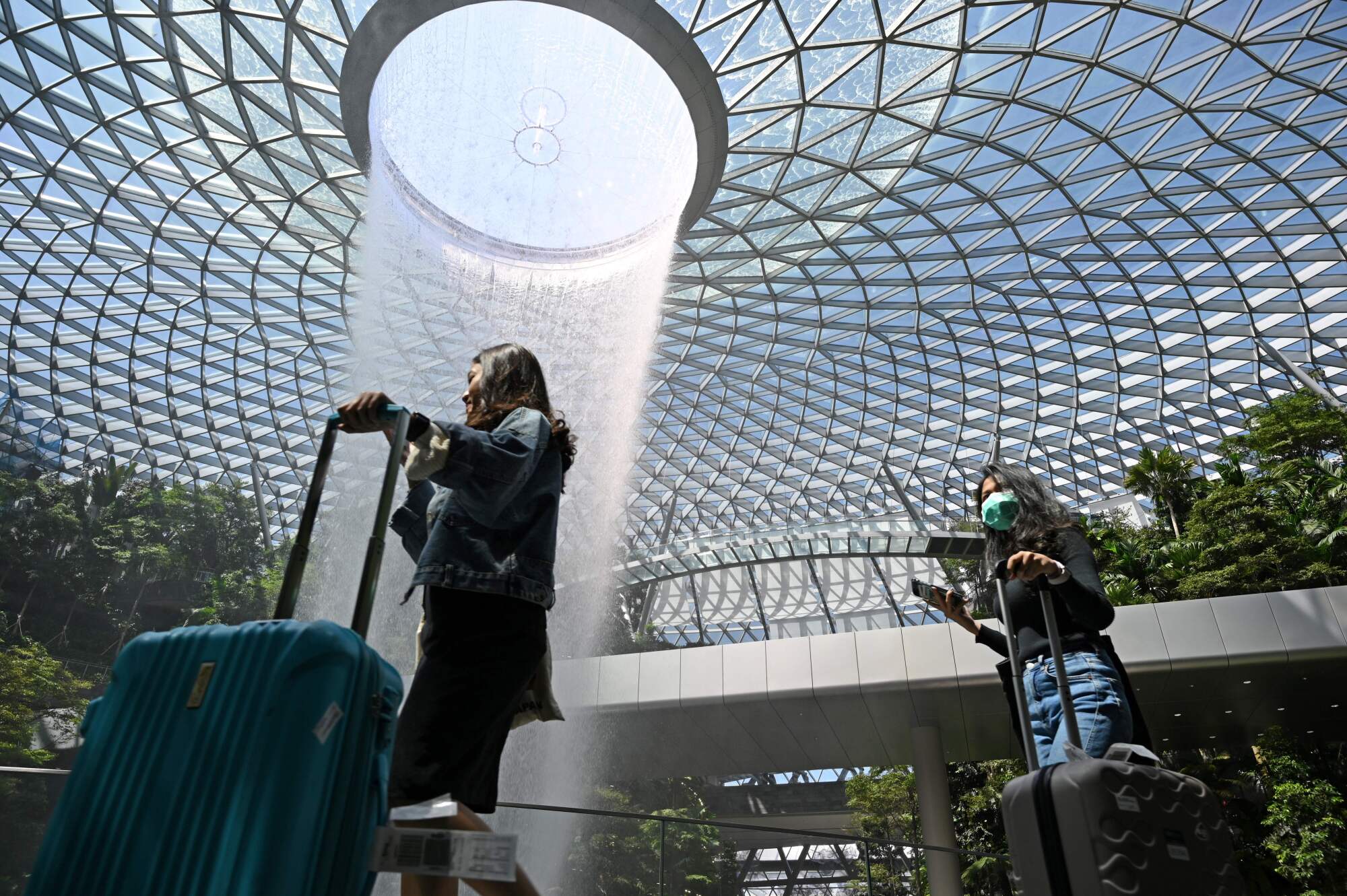
Some countries are seizing on Asia’s relative success in containing the virus to establish travel bubbles and green lanes to allow limited numbers of foreign tourists and essential workers to visit. Without a vaccine, however, such measures will probably fail to build momentum to spur a rebound in aviation, experts said.
Thailand, a country that’s held reported infections to about 3,200, said it would open its borders to 1,000 foreign tourists per day in August to a handful of provinces. Only visitors from countries deemed to be free of the pandemic, including China, Japan and Taiwan, will be welcomed.
How governments determine which countries are doing well with the disease and which ones poorly remains a point of contention. Indonesia, despite having the worst outbreak of COVID-19 in Southeast Asia, announced it would allow foreign visitors to enter Bali starting Sept. 11 to help revive the resort island’s battered tourism industry.
But the virus continues to be as mercurial as it is disruptive. A new outbreak in Hong Kong this week underscores how conditions in even the most successful cities can suddenly lead to rising infections.
“Green lanes or bubbles will be highly susceptible to stops and starts as new disease clusters emerge until we get a vaccine,” said Nicholas Consonery, director of global markets research for Eurasia Group, a political risk consultancy. “Any agreement for freer travel between two governments will be subject to immediately being rescinded if one of those countries has a new or unexpected outbreak.”
Singapore’s government remains wary of a new outbreak, even after lifting a lockdown last month. Masks are mandatory, people can only gather outside their homes in groups of five or fewer and foreign visitors remain prohibited.
At Changi, rows of grounded airplanes sit idle on the tarmac in tight formations. Two of four terminals have been shuttered, and even the butterfly garden has been partially dismantled.
Only a dozen travelers were spotted inside one of the terminals still in operation on a recent weekday — vastly outnumbered by airport employees tinkering with new safety features such as the disinfectant-misting robot, which resembled a mini-Zamboni emblazoned with a smiling cartoon face.
Check-in kiosks were outfitted with infrared strips that allowed users to hover a finger an inch or two above the screen to make selections. Iris scanners now replace the need to provide thumbprints at immigration booths.
When Changi’s executives announced last month it would delay construction of its Terminal 5, they did so because they wanted time to glean how much the travel industry would change.
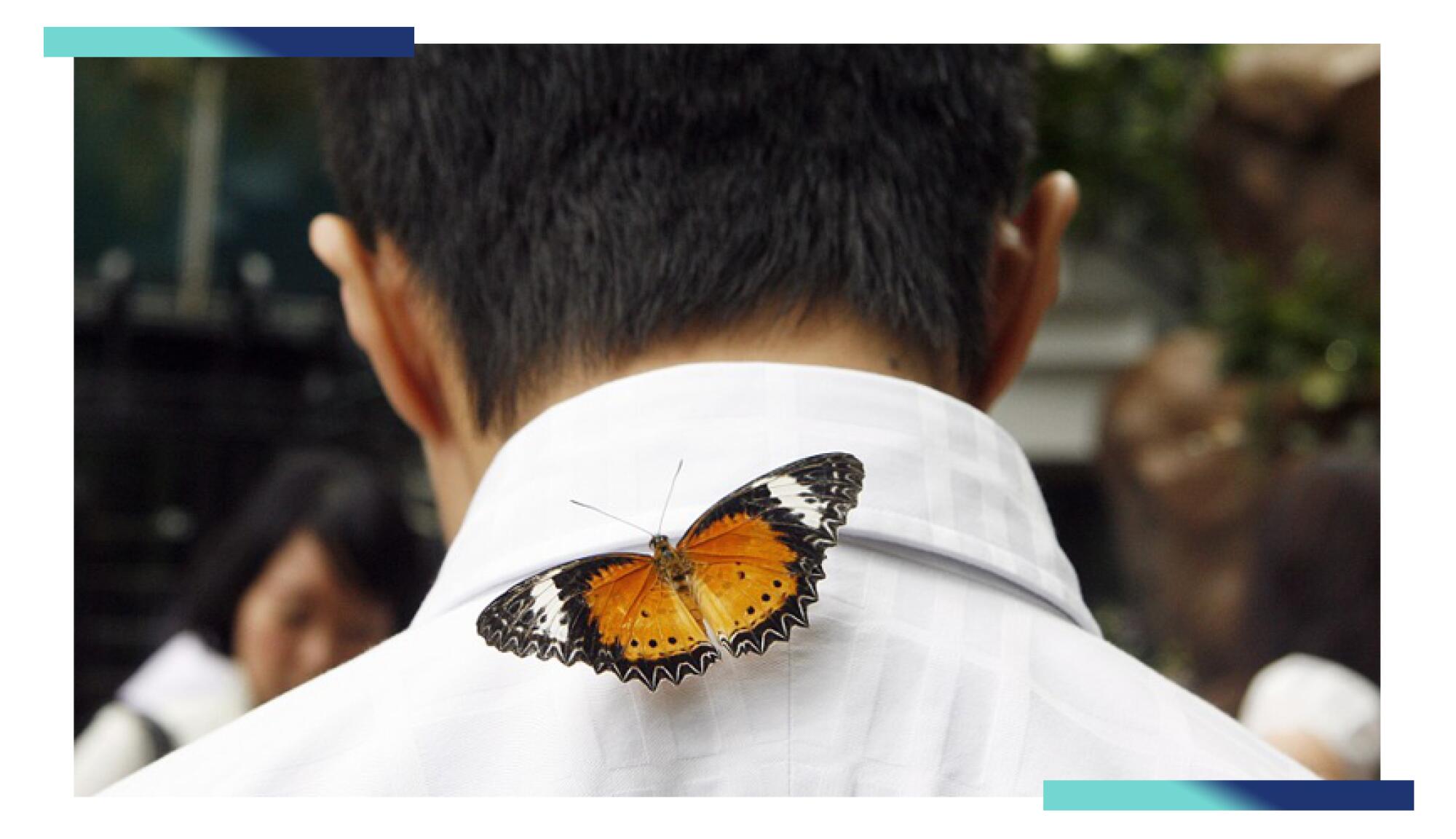
“We’re trying to determine what the terminal of the future will look like,” said Ivan Tan, chief spokesman for Changi Airport Group. “Do we have to do things like improve air circulation to reduce airborne pathogens? How do we make things as contactless as possible?”
Not too many months ago, it wasn’t uncommon for parents to bring their young children to Changi on weekends to let them run around the cavernous carpeted terminals. Now, Singaporeans are starting to book staycations at an airport hotel so that they can spend time at the Jewel, the domed mall known best for its 130-foot tall Moshe Safdie-designed “rain vortex” waterfall.
“It’s a uniquely Singaporean thing to spend time at the airport,” Tan said. “You’d never do that at LAX.”
More to Read
Sign up for Essential California
The most important California stories and recommendations in your inbox every morning.
You may occasionally receive promotional content from the Los Angeles Times.
